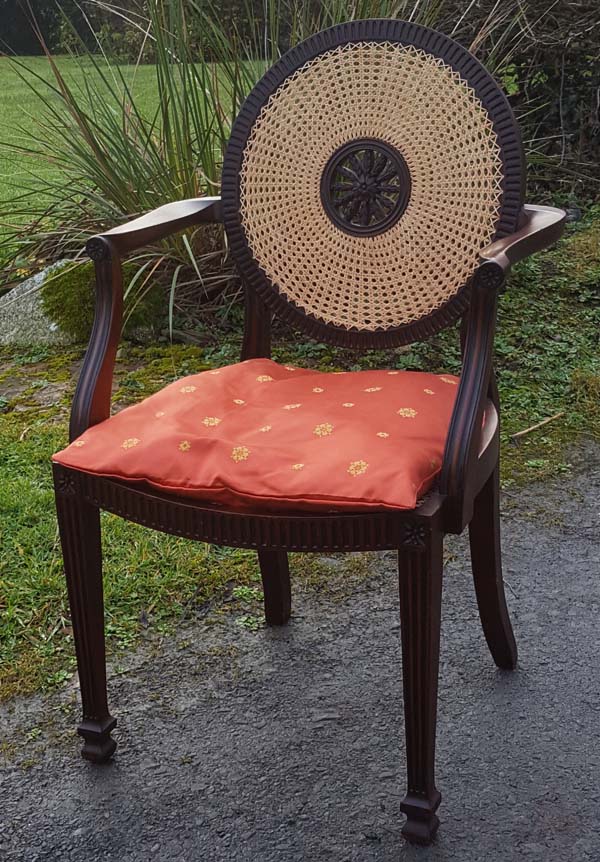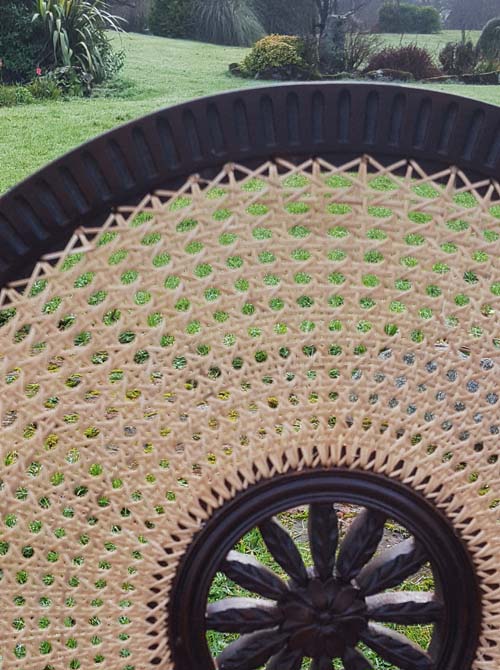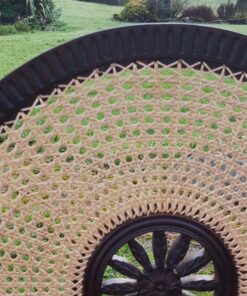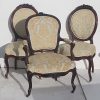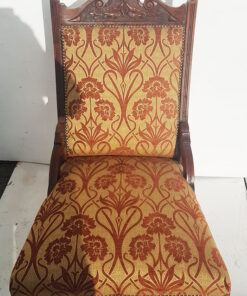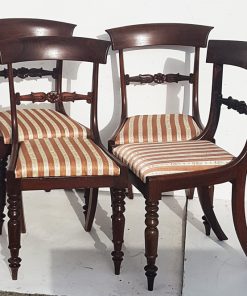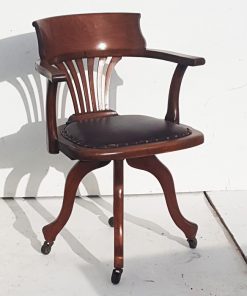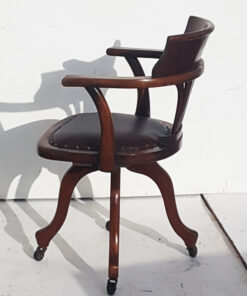Status
Unlimited tickets
0 Has Sold
Canework Carver SOLD
Canework Carver was made from mahogany in the late nineteenth century as an expensive statement of wealth.
The cane is split from a vine called rattan that grows in Southeast Asia and parts of Africa. https://en.wikipedia.org/wiki/Rattan
It is often mistakenly called wicker – actually wicker is to do with willow.
We always go to Seat Weaving Supplies in Fernndown, Bournemouth for split cane and other natural fibres. The chair frame is drilled with a line of 4 mm holes to take the cane and then each of the six threads of cane are fixed in the holes and woven individually to create the strong and durable material.
A flat square weave such as the seat panel is relatively straightforward to weave but the back is quite complicated. The “rays are fixed in place first and the two strands are used to create a spiral. In this case, with eleven turns. Finally, the fifth and sixth weaves (or ways) are woven diagonally to create the distinctive pattern.
Woven split can is durable and should last many decades if looked after but there are a few things that should never be done to canework.
- Never sit directly on a woven split cane seat. It should be provided with a thin cushion, properly called a squab. The squab protects the canework form warmth and humidity. Humidity can be damaging because, cane stretches out when moist and then shrinks back as it dries. There are only so many times that can happen.
- Never apply solvent based stains to age or artificially darken renewed canework. Its the same as applying old fashioned solvent based paints to wood – both cane and wood loose their nature: In the case of wood it becomes brittle and unworkable. and for cane its much the same, making it susceptible to snapping.
- Never stand on a woven split cane seat. the material is adequate for seating where the load is applied uniformly but not when the same load is applied over a small area.

